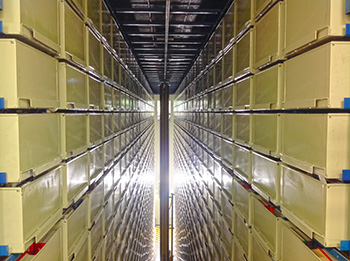eNews Edition: Spring 2015
Contributed by Doris Helfer, Del Williams and Christina Mayberry
It is difficult for librarians, book lovers that we are, to take part in a process that actually removes books from the shelves. Yet, as libraries are becoming more assessment driven and therefore more data driven, we are discovering that student requirements are changing. The practice of selectively removing books from a library, based on objective criteria such as borrowing patterns and the age of the book, has been taught in graduate schools of library and information studies for many years. This practice of de-selection, affectionately known as “weeding,” also utilizes the good judgment of librarians and consultation with campus faculty. Since the Oviatt Library was opened in 1973, the Library collection has never gone through a major weeding project. But as we have evolved in our thinking about the 21st century library, which has been transitioning from the resource repository model of the past to the learning commons model of the future, librarians have become more involved in information literacy efforts and thus more aware of student needs.

Automated Storage and Retrieval System (ASRS) at the Oviatt Library
Today’s Oviatt Library is a teaching and learning laboratory. The Library Learning Commons needed space to grow, and so to allow for this growth we began Phase One of a curation project in Spring 2013. Many of the volumes in this print reference collection had become outdated or had largely been replaced by online reference resources preferred by students and more easily accessible to an electronic generation. The weeding of those books allowed the Oviatt Library to use fewer and lower shelving units, which in turn created a lighter and more open space for student study areas, effectively creating a brighter and more welcoming learning environment. In addition, the increase in the number of group study rooms and areas for student interaction allowed more opportunities for collaborative learning.
Phase Two of the de-selection process began in the Spring of 2014. New access to journal archives in electronic format meant that the print volumes could be removed from the stacks. The remaining print journals (those without a digital equivalent available to our students and faculty) were moved into the Automated Storage and Retrieval System (ASRS). This shift has allowed the Library to make room for a major expansion of Special Collections and Archives on the second floor. This construction project, scheduled to begin early Summer 2015, will add an archives classroom, a larger more comfortable reading room, and a centralized processing area to enable Special Collections and Archives staff to receive and process new collections more efficiently.
Phase Three involved the removal of monographs deselected by librarians based on the criteria outlined by the acronym MUSTIE: misleading, ugly, superseded, trivial, irrelevant, elsewhere. When making de-selection decisions, librarians consider whether an item is damaged beyond repair, whether it still supports the campus’s research or curriculum needs, whether there are duplicates or later editions, whether the material is factually out of date, and whether it is available in a newer format.
All titles pulled for deselection met all of the following conditions: they were stored in the ASRS, held by three or more other CSU campuses in the LA Basin and available for checkout, had not been checked out in recent years, were published between 1900 and 1999, and were added to the Library’s collection prior to 2005. De-selected books are sent to Better World Books, an organization that supports literacy initiatives worldwide by redistributing books. As items are removed from our storage facility, we are able to move less-frequently used materials off the floor and into storage.
Oviatt Library Dean Stover says, “In an ongoing effort to optimize our print collections to best serve information needs, and to offer our community a more modern and supportive learning environment in the Library, we will continue to carefully manage the collection.” The additional space created by shifting and removing materials provides students more functional and collaborative work spaces. Continued curation of the Oviatt’s collection will provide CSUN students with the learning resources they need to succeed and thrive both academically and professionally.


